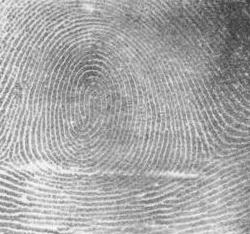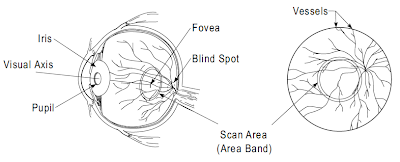Angels & Demons is a great book written by Dan Brown that is full of suspense and mystery. In 2009 a film adaptation of the book was made starring Tom Hanks as Robert Langdon, a Harvard symbologist.
But while the book and the movie are entertaining they are full of inaccuracies. That is why I got the idea to write about the inaccuracies from J.D.’s blog
Science in Fiction. J.D. is no stranger to pointing out inaccuracies in Angels & Demons, since she already has in her post
Angels +Demons + Science. Go check it out!
But seeing as this is a biometrics blog I will post on the inaccuracy in biometrics on Angels & Demons, particularly their use of a retinal scanner.
The Prologue to the book is a grim scene where an intruder brands Physicist Leonardo Vetra and “The figure produced a blade and brought it to Vetra’s face. The blade hovered. Carefully. Surgically.” You find out later in the book that Vetra’s eye was “stolen” during his murder.
Once Langdon makes it down to Vetra’s laboratory deep underground, they find that the laboratory is locked with a retinal scanner. Langdon realizes why the eye was stolen and looks below the scanner at a couple drops of blood. Further in to the laboratory there is another retinal scanner where this time on the floor they find Vetra’s eye in all its hazel colored glory.
So the question then is: Is it possible to remove an eye and use it for a retinal scanner? And the answer is very obviously no.
There is a reason I called Retinal scanners the
King of Biometrics, since fooling the scanner would be incredibly hard. As far as taking the eye from Vetra and using it on the scanners there are a few reasons why this simply could not work.
First of all, soon after you die all of the blood drains from your retina and thus there is no pattern to recognize. You might be inclined to point out that the prologue suggests that Vetra is still alive when his eye is removed and you would be correct. But even given that he was alive when his eye was removed the retina would be ruined if not preserved in a perfect way.
Consider the retina as a thin piece of tissue paper lining the surface of a sink full of water. When the water is moved the retina would detach and thus ruin it for scanning. In a younger person the sink would be full of a material with a consistency closer to jello. However in the book it mentions that Vetra is elderly and thus his retina would be very fragile.
Secondly even if somehow the killer could remove the eye perfectly without ruining the retina, he could never use it on the scanner. As you loyal readers know, retinal scanning requires the subject to focus on a green light that they observe in the scanner. This simply could not be done with a detached eye.
Thus in a fully accurate world, the killer would never have gotten access to the top secret lab and would have never have stolen the anti-matter therefore the entire scenario could have been avoided.
But don’t be such a scientist! Even though the book has a lot of inaccuracies it still tells a good story and I recommend you read it, or watch the movie. Just try to hold back yelling at the screen now that you know the truth :)
Source: James Carlisle. Eyeball to Eyeball: The use of Biometrics in Angels & Demons.










